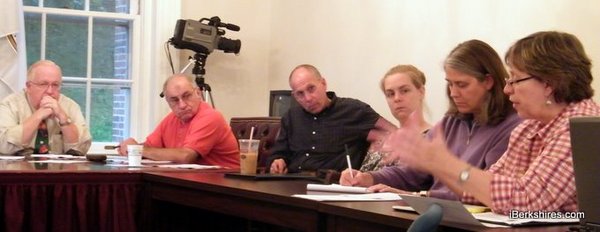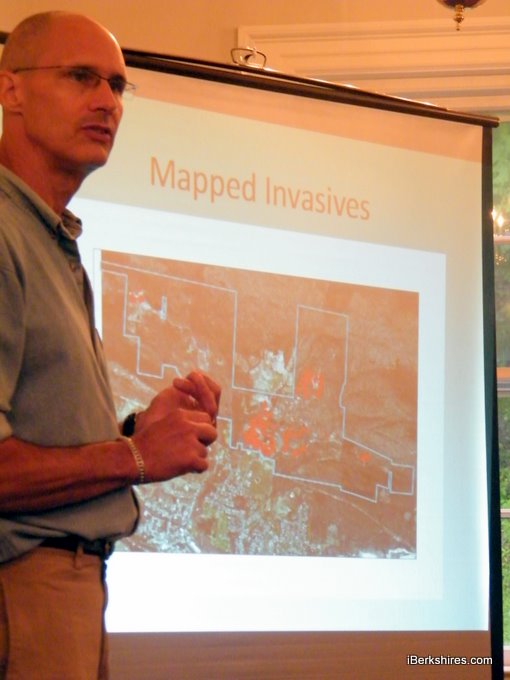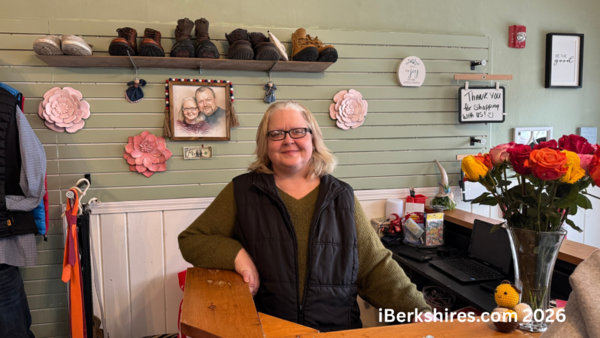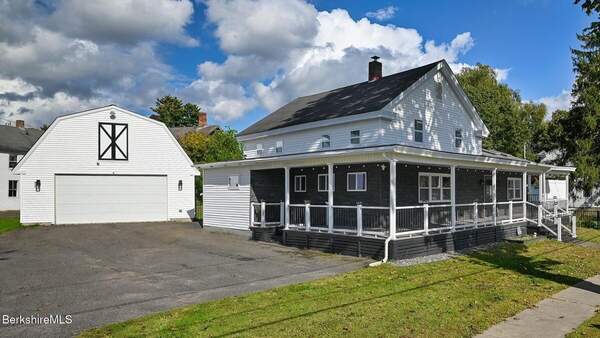
Greylock Glen Committee Learns Harsh Truth About Invasive Species
Project Clears MEPA Hurdle.jpg) Members of the Greylock Glen advisory committee watch a slideshow as Steve Johnson explains the detrimental effects of invasive species. |
In the crucial areas of the proposed Greylock Glen project, the presence of invasive species is a problem that's "out of control," according to Steve Johnson, an ecological consultant from an Amherst-based company called Biodrawversity.
Johnson is in the early stages of drawing up a three-year plan to manage invasive species in the Glen, and he provided a report of his preliminary findings to the Advisory Committee on Thursday afternoon at Town Hall.
"Right now, it's just out of control," Johnson said. "It will take a great deal of effort to get to the point where it becomes something that's manageable for a smaller group of people and a much smaller budget."
During a slideshow presentation to the Advisory Committee, Johnson identified the specific invasive species found in the Glen, including garlic mustard (plant), phragmites (grass), glossy buckthorn (shrub), autumn olive (tree) and morrow's honeysuckle (shrub). He said that garlic mustard in the most pervasive of his findings.
Invasive species are detrimental to an ecosystem because of it's fast growth, rapid reproduction and its high tolerance to adapt to a wide-range of settings, even in human-disturbed environments.
 The areas marked in red are inhabited by invasive species. The red patch located in the center of the slide lies in the 'core area' of the proposed Greylock Glen project. |
Johnson is responsible for identifying the problem areas, while Chris Polatin of Polatin Ecological Services will be in charge of the restoration.
Asked by Donna Cesan, the town's director of community development, to detail the methods that would be used to control the problem, Johnson said the procedures vary by species. Methods range from: cutting trees down to their stems and applying herbicides; burning or spraying the shrubs; and even hand-picking the plants.
Johnson said that Polatin will be sensitive in his approach to eradication.
"He doesn't want to take a bulldozer to all of this," Johnson said.
In other business on Thursday:
► Cesan provided hard copies of the Secretary's Certificate, which was provided by the Massachusetts Environmental Policy Act office on May 7 of this year. It states that project planning could continue without the town having to submit more reports. The certificate details the steps that need to be taken as the project moves forward and "to minimize environmental impacts to the greatest extent feasible."
"This is a good guideline for the work ahead for us," Cesan said.
One of the guidelines included in the certificate was "to develop and implement an invasive species management plan," which the town has already started to address with Johnson's research and preliminary report.
► Cathy Garnett, from the state's Department of Conservation and Recreation, said she's "really close" to applying for permits for the trail portion of the project.
The landscape architect for the trail is Harold Dodson of Dodson Associates. The permitting process includes approval from the town's Conservation Commission and the Planning Board. Garnett hopes to present finalized plans to the Conservation Committee in July.
















